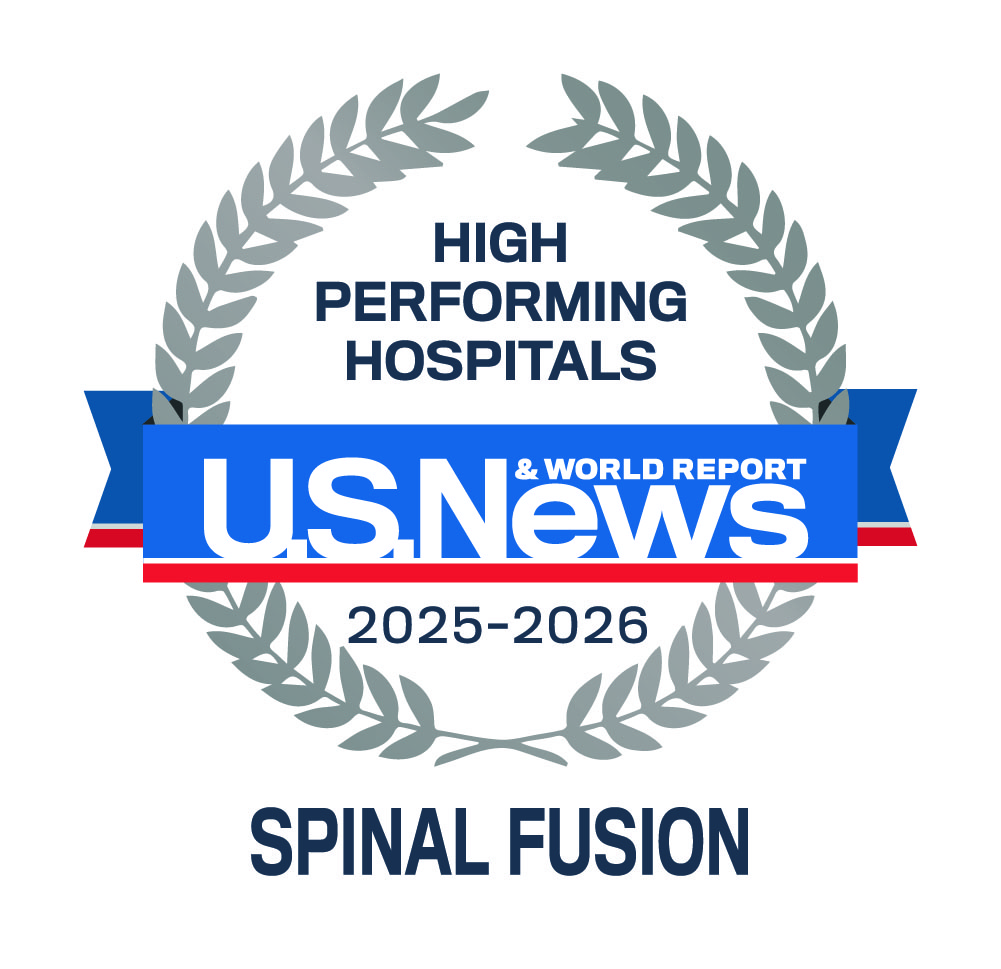Back, Neck & Spine
The spine has 33 vertebrae that help you bend, lift and move. This complex structure of discs, tendons, muscles and ligaments keeps you moving freely. But spine conditions or injuries can lead to mild discomfort or debilitating pain and interfere with your daily activities, impacting your quality of life.
You're not alone if you experience back, neck or spine conditions. Back pain is the leading cause of work-related disability, and neck pain affects more than 30% of U.S. adults. It can happen for many reasons — overuse, strenuous activity, trauma, injury or even a benign tumor.
At the Methodist Neuroscience Institute, our team of leading experts will diagnose, treat and help you recover from back, neck and spine conditions and injuries. As an academic medical center of The University of Tennessee Health Science Center, you'll find the latest innovations and approaches to help you get relief and feel better as quickly as possible.
Back, Neck & Spine Treatment
When you need treatment for spine conditions, our highly skilled team of neurologists, neurosurgeons, anesthesiologists, advanced nurse practitioners, pain management specialists and other providers are passionate about getting you back to full health.Back, Neck & Spine Conditions We Treat
- Cervical radiculopathy (pinched nerve) – Irritation or compression of a nerve in the neck next to the spinal cord, causing shoulder or arm pain, numbness or weakness.
- Degenerative, herniated and ruptured discs – Occurs when a small piece of the disc is pushed out of the outer layer (annulus) that surrounds the spinal canal. This can be caused by age-related wear, a tear or rupture, or an injury.
- Lower back pain and spine instability – This isn't always caused by an underlying condition. Displacement, quick movements leading to a strain, overuse, and sitting too long can lead to pain and a feeling like the back is unstable.
- Spinal stenosis – A common neck and lower back condition often caused by age-related wear and tear. The condition puts pressure on the spinal cord and nerves, causing pain, numbness, weakness, and bladder or bowel problems.
- Spondylolisthesis – Occurs when a vertebra moves (slips) out of place and compresses the nerve. It may be caused by congenital (present at birth) defects, trauma or injury, osteoporosis, bone defect, and degenerative (over time) changes.
- Spinal deformity – Conditions that can develop because of spinal disc degeneration but can also develop at birth, such as congenital kyphosis (forward curve). Scoliosis (sideways curve) and lordosis (concave lower back) can be caused by weak abdominal muscles, inherited bone growth disorders, arthritis, osteoporosis and Scheuermann's disease (misshaped vertebrae).
- Spinal cord tumors – Rare tumors that can be malignant (cancerous) or benign (noncancerous). They can put pressure on the spinal cord and cause chronic neck or back pain, neurological problems like muscle weakness, difficulty walking, and loss of bowel or bladder control.
- Spine fractures and trauma – Injuries that affect the nerves inside the spine, causing extreme pain, weakness and numbness.
Nonsurgical Treatments for Back, Neck & Spine Conditions
When you need treatment for back, neck and spine pain, you’ll find a full range of nonsurgical treatments at Methodist. Whenever possible, we use the least invasive approaches, including pain management, laser therapy, electrical nerve stimulation, and physical therapy.
Exercise Changes
Often, making changes to your exercise schedule — such as increasing or decreasing activity — can help relieve symptoms.
Medication Management
We often recommend a multimodal pain-relief approach, which is a combination of medicines for pain relief. Many people find relief with nonsteroidal anti-inflammatory medicines (NSAIDs) like ibuprofen, combined with antispasmodics (muscle relaxants) and antiepileptics (such as gabapentin).
Physical Therapy
Restoring function, relieving pain, and improving your mobility is the goal of physical therapy. We use various therapy approaches, including therapeutic ultrasound, manual therapies, and stretching and strengthening exercises.
Minimally Invasive Approaches for Back, Neck & Spine Conditions
If you find little relief from nonsurgical treatments, we provide minimally invasive procedures to treat back, neck and spine conditions. Some of the more common minimally invasive treatments include:
- Interventional techniques – Use imaging technology to find the exact location of the pain and treat it at the source. This approach can help relieve pain for weeks or months.
- Epidural injections – Can relieve pain caused by inflamed nerves. Medicine is injected into the epidural space (the area between the membrane and the vertebrae wall), bringing pain relief for several months to years.
- Radiofrequency ablation (rhizotomy) – Uses heat to “burn” the nerve causing pain and stop it from transmitting pain signals to the brain.
When To See an Expert for Back, Neck & Spine Pain
It’s challenging when you don’t have full mobility and live with back, neck or spine pain. If you experience moderate pain that doesn’t get better within a week of self-care, talk to your doctor about how a spine specialist can help.
You should make an appointment with your doctor if you have:
- Moderate neck pain that won’t go away.
- Loss of feeling in your neck, back or legs.
- Pain in your extremities, such as your arms and hands.
- Weakness in your leg muscles or gripping muscles in your hands.
- Heaviness in your legs or difficulty walking.
- Dexterity problems that affect daily activities like writing and cooking.
- Pain that won’t go away after an injury.

